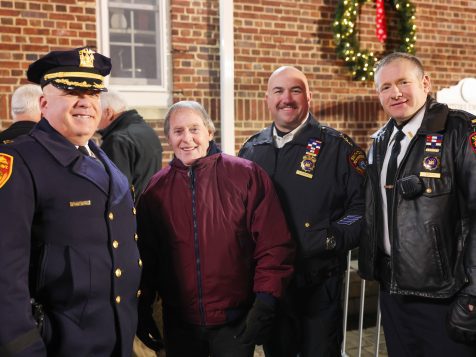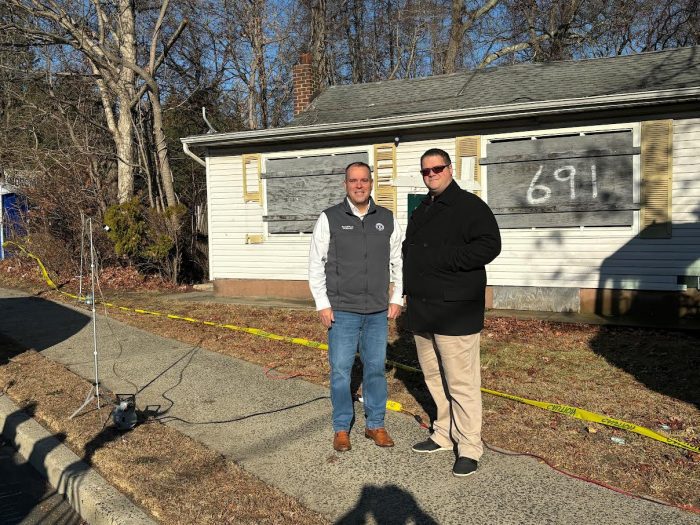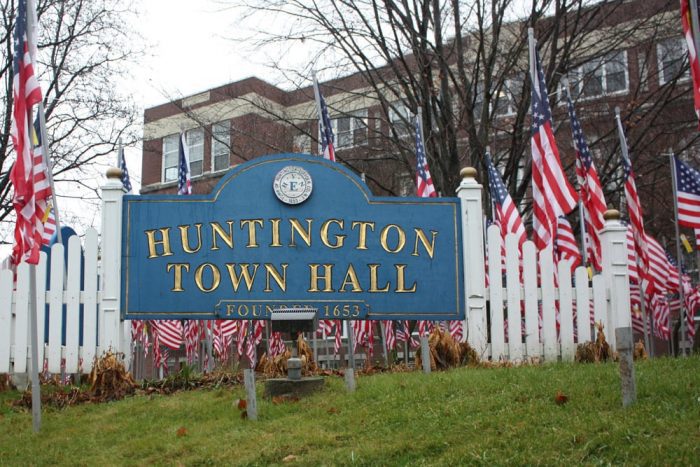The Suffolk County Water Authority (SCWA) and the Village of Port Jefferson marked the completion of three major water infrastructure projects with a ceremonial check presentation on Nov. 25. SCWA provided $473,000 to the village for road restoration, enabling curb-to-curb paving of affected roads at no cost to residents.
The upgrades, part of SCWA’s effort to modernize its system and enhance service reliability, included replacing outdated water mains, addressing failing water connections and improving fire protection. The projects aim to ensure more dependable water delivery and better infrastructure for the community.
“Modernizing our water infrastructure is essential, allowing us to deliver water our customers can trust and service they can rely on,” said SCWA Chairman Charlie Lefkowitz. “This collaboration with the Village of Port Jefferson exemplifies how municipalities and utilities can work together to maximize benefits for the community.”
The completed work included replacing 3,500 feet of water mains on Old Post Road with durable ductile iron pipes, enhancing water distribution and fire protection. On East Broadway, 14 aging service connections were replaced to address recurring leaks caused by challenging ground conditions. Additionally, 475 feet of undersized cast iron water mains were replaced on Nicholas Street, improving water pressure and reliability.
With these upgrades complete, the village can now begin road restoration, fully repaving affected streets. By overseeing the road restoration, the village reduced costs and ensured the roads meet community standards.
“The Village of Port Jefferson places great value on its partnership with the Suffolk County Water Authority,” said Port Jefferson Mayor Lauren Sheprow. “We now have upgraded water infrastructure and the village can fully and efficiently restore the roads for our residents. This collaboration demonstrates true teamwork in serving the public and we are grateful.”
Residents welcomed the improvements. “I live near Old Post Road and I drive it all the time,” said Peter Duran, a local resident. “It’s been a little bumpy but I knew it was just a matter of time before they paved this road. I think the village is doing a good job.”
About the Suffolk County Water Authority
The Suffolk County Water Authority is an independent public-benefit corporation operating under New York State law. Serving approximately 1.2 million Suffolk County residents, SCWA operates on a not-for-profit basis without taxing power.















 The building renovations, upon completion, will feature a welcome center on the first floor, providing essential amenities for park visitors, including restrooms, bait shop, food concession, and an office for the local canoe/kayak rental business. The main floor will also feature educational nature exhibits for visitors of all ages, alongside a dedicated area to showcase local tourism. Here, organizations such as the Chamber of Commerce and other community groups can display marketing materials and informational pamphlets to highlight the rich cultural, historic and natural attractions, and special events available in the Township.
The building renovations, upon completion, will feature a welcome center on the first floor, providing essential amenities for park visitors, including restrooms, bait shop, food concession, and an office for the local canoe/kayak rental business. The main floor will also feature educational nature exhibits for visitors of all ages, alongside a dedicated area to showcase local tourism. Here, organizations such as the Chamber of Commerce and other community groups can display marketing materials and informational pamphlets to highlight the rich cultural, historic and natural attractions, and special events available in the Township.









